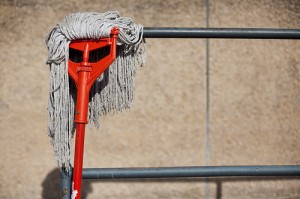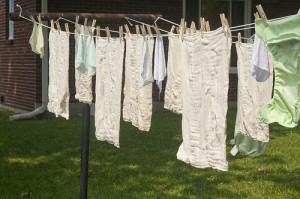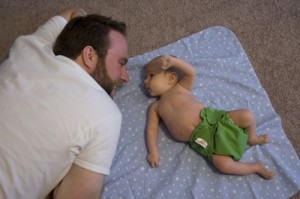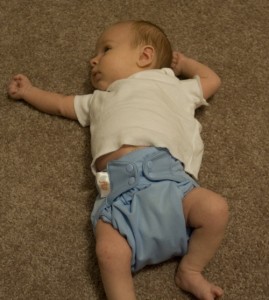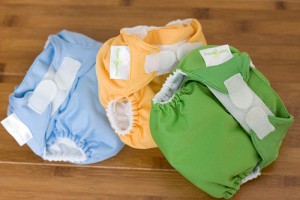I would love to have Judah potty trained before Baby 2 arrives in September. At almost 2 and a half, he is definitely showing interest. But every time we’ve tried, as much as he wants to get it, it seems like his brain and his bladder just aren’t on the same page.
He frequently asks to go to the potty, and I take him, but nothing usually happens when we get there. It’s a big game. I know he needs more direction and something other than diapers to help him make the connection, but I’ve been putting it off for weeks hoping that I would start to feel better.
I do feel a little better now (somewhat), but more importantly, my husband will be on vacation for a month in May and June, so I’ll have some help. We’ve decided to give it a shot and see if Judah is ready with a little guidance and more intensive efforts on our part.
I know that putting him on the potty while he continues to wear regular diapers is pointless. Those dang things just keep them so dry (great for newborns, not great for potty-training). He needs to feel when he’s wet to make that connection. I considered putting him back in cloth diapers, but I need something that’s easy on and off so we can manage quickly or he can do it himself.
Pull-Ups are the most popular option, but I just can’t get over the price. Twenty five to 30 cents a diaper?! And that’s for the generic brand! We currently pay about 16 cents per diaper for the Target-brand diapers we’ve used since Judah switched out of cloth at 12 months, so doubling our diaper cost is a tough pill to swallow. Especially since the few times I’ve put him in Pull-Ups, they’ve leaked terribly. Plus I really don’t like how similar to diapers they are. I feel like he needs something new and different to help him understand that it’s time for him to try to stay dry.
I also considered reusable training pants like these Flip training pants. They’re easy on and off, but I’ve heard conflicting reports from friends who’ve used them about how effective they are (according to some, the liner shifts and causes leaks). I’m also having the same problem with price. They’re a little more affordable than the all-in-one training pants I’ve seen for $15-$20 each since the cover can be used a few times before washing, but the reusable inserts cost about $6 a piece. If I bought two covers and 12 inserts, I’d pay almost $100 for the whole system. Probably still less than I’d pay for a few months in Pull-Ups, but still. Yikes. Especially since I’m not even sure how well they’ll work.
Several people on my Facebook page suggested DIY options. I found this tutorial for DIY cloth training pants that involves modifying Gerber training pants (the kind that are basically cotton underpants with a little extra layer of padding where it’s needed) to add a few extra layers of flannel and a waterproof outer layer. I like that they look and feel more like underpants, which I think will make a big difference for him psychologically. Plus they’re less bulky. They will definitely leak, but I’ve yet to hear about a training pant that doesn’t. It seems like that’s kind of the point — if they’re as effective as diapers, there’s no incentive for kids to stop wetting them. At least these won’t cost a fortune! They should cost about $2.75 per pair. I can make a dozen for what I’d pay for a few weeks’ worth of Pull-Ups. That seems a lot more doable for something that my toddler is going to pee on.
I haven’t made them yet, and I obviously haven’t tested them, so I guess we’ll see how it goes.
I’m feeling pretty overwhelmed at the prospect of starting this process, though, so I’m curious how you did it. Did you use Pull-Ups? Or are you one of those brave people who went cold turkey with diapers and just cleaned up messes for a few days until it clicked? (I can’t even imagine that right now, though I do hear it’s effective.) Send me your potty-training advice and encouragement!
